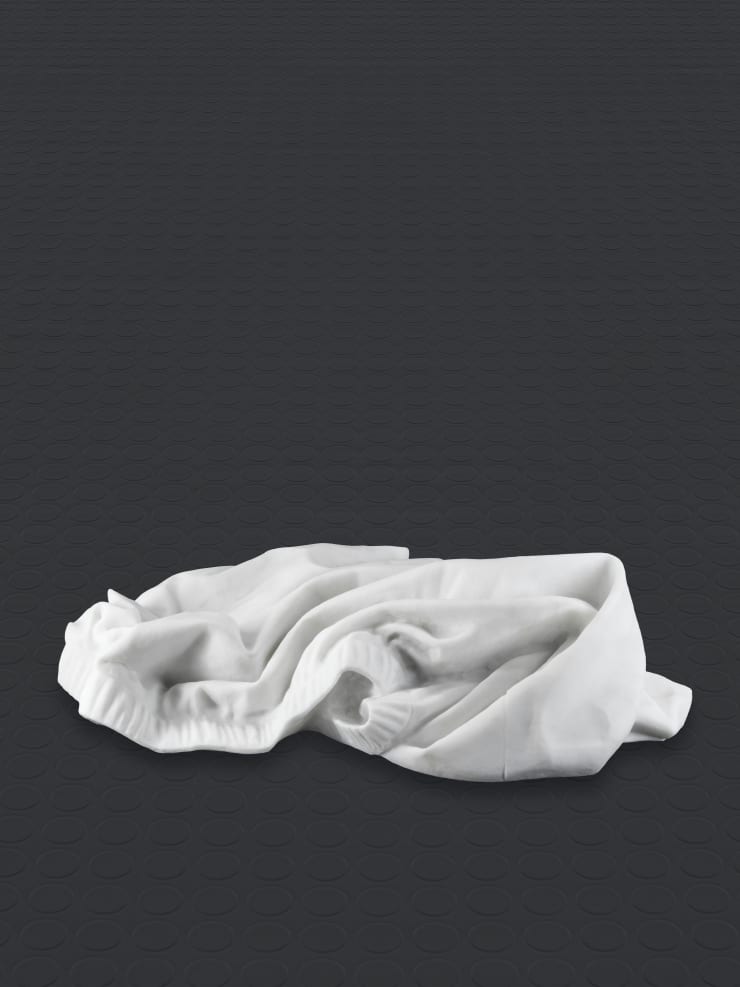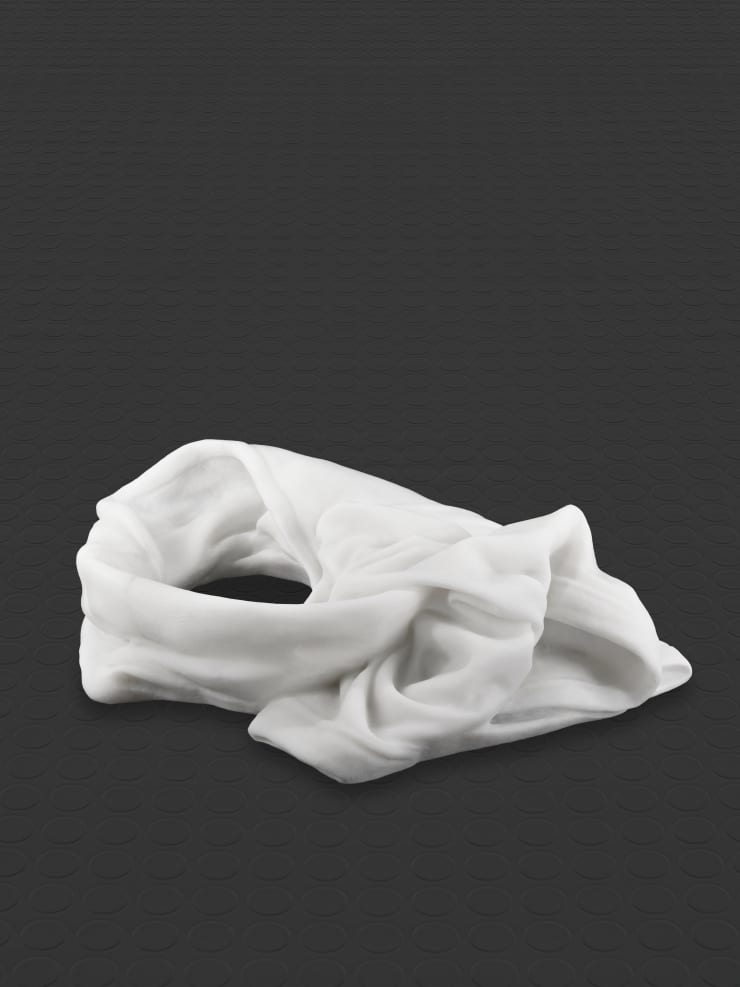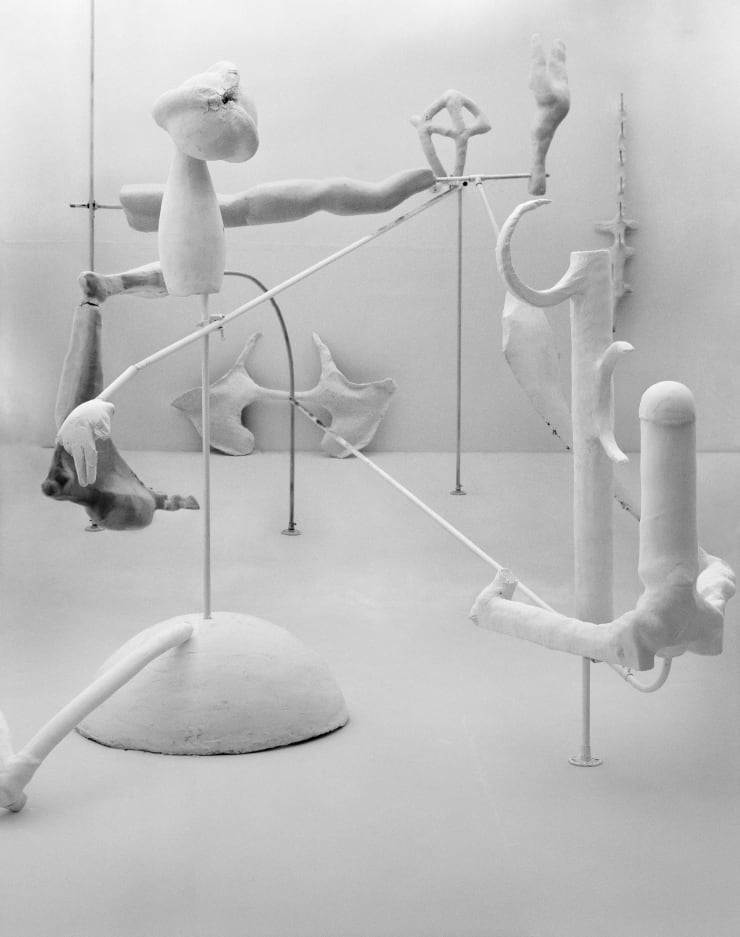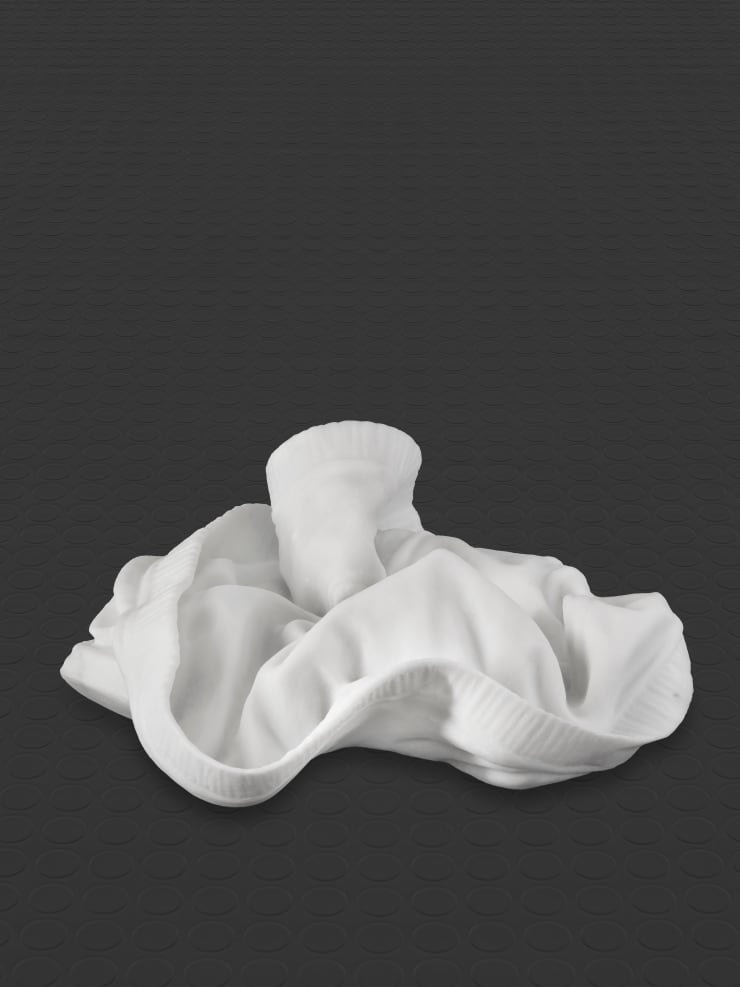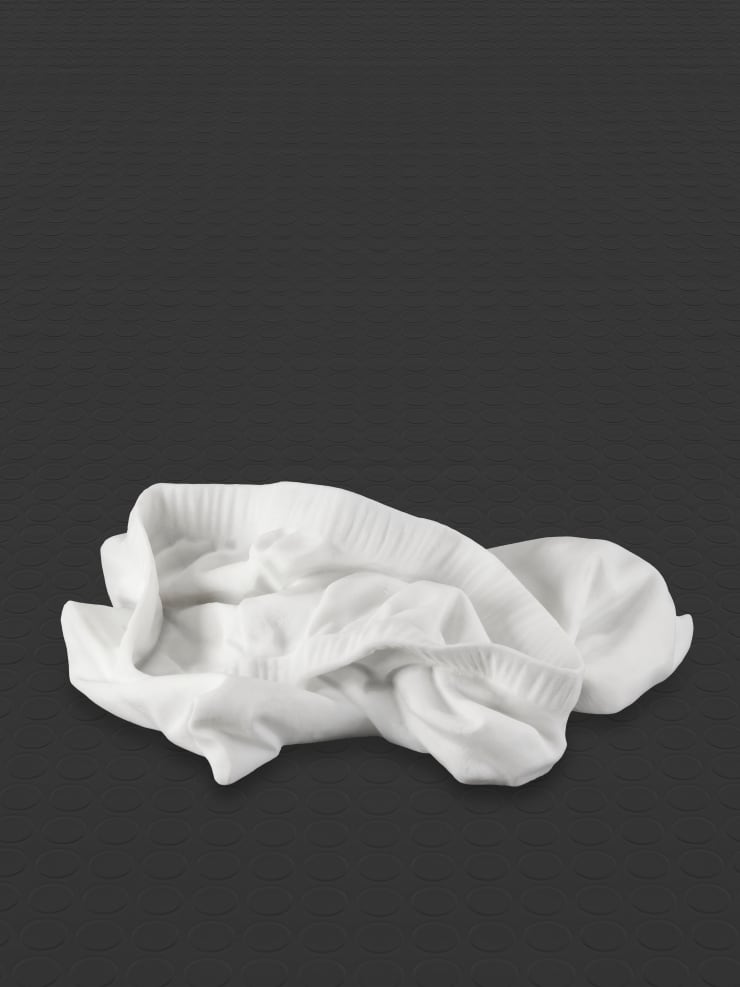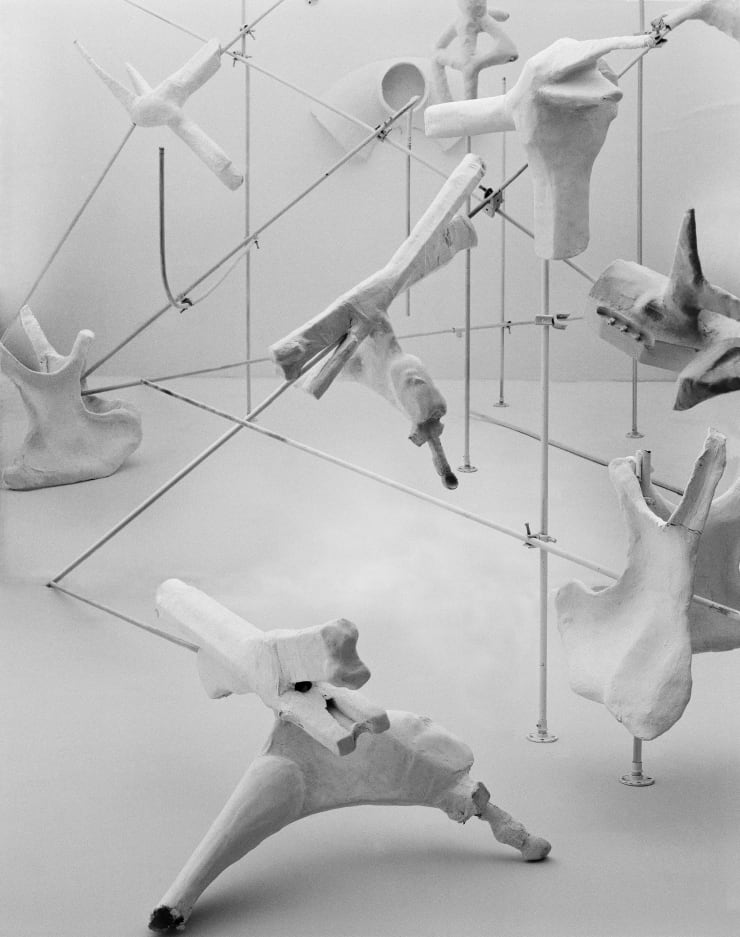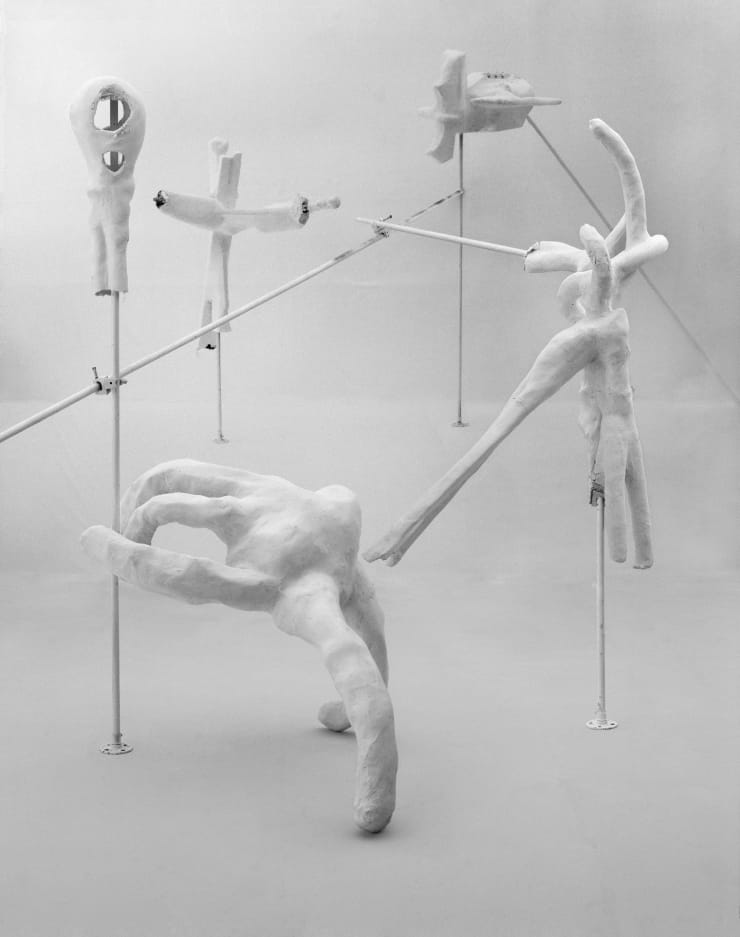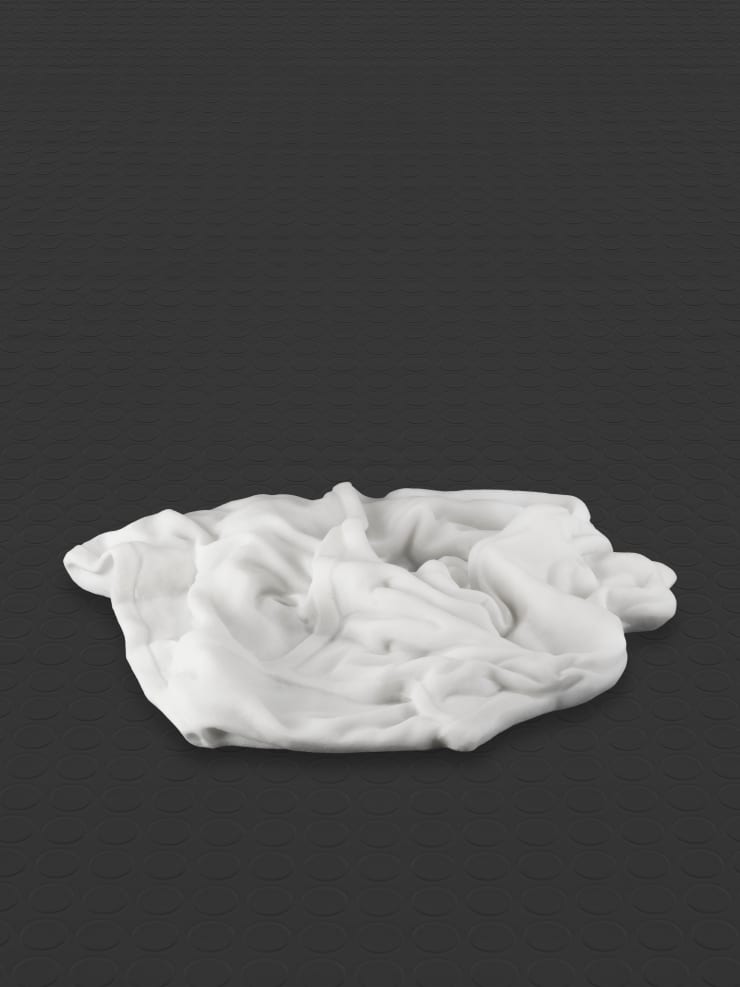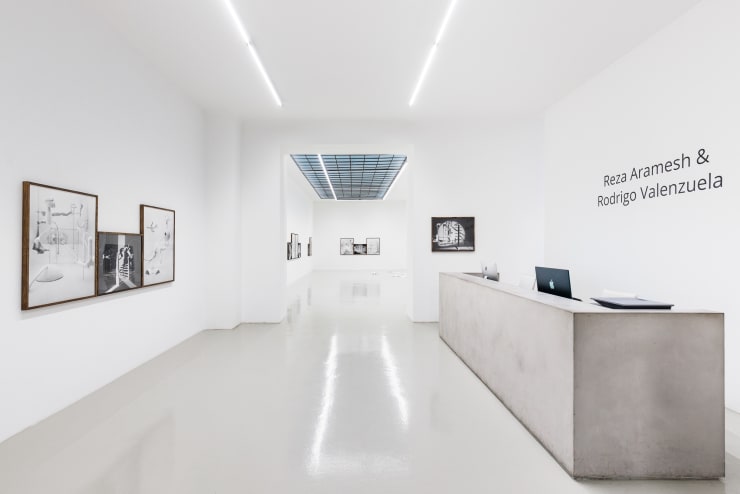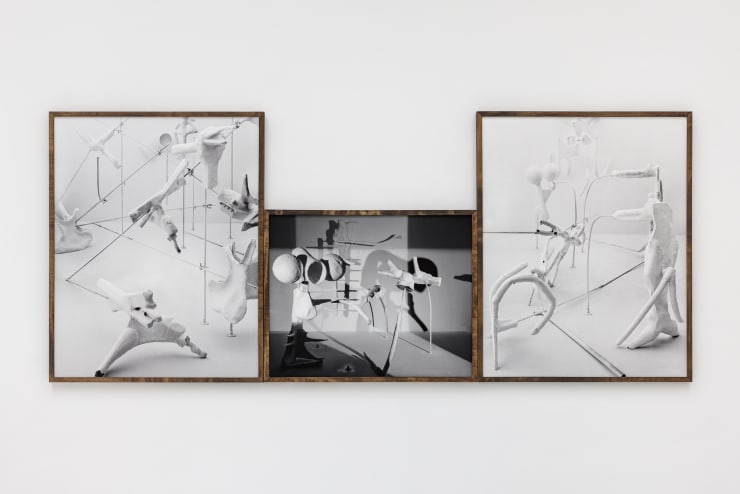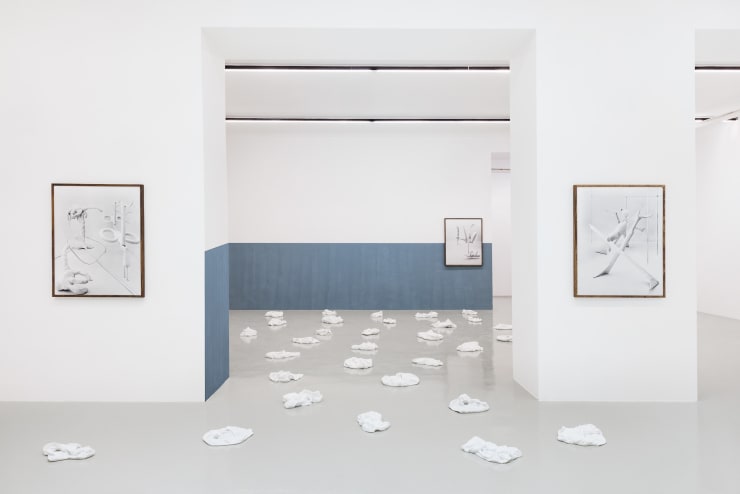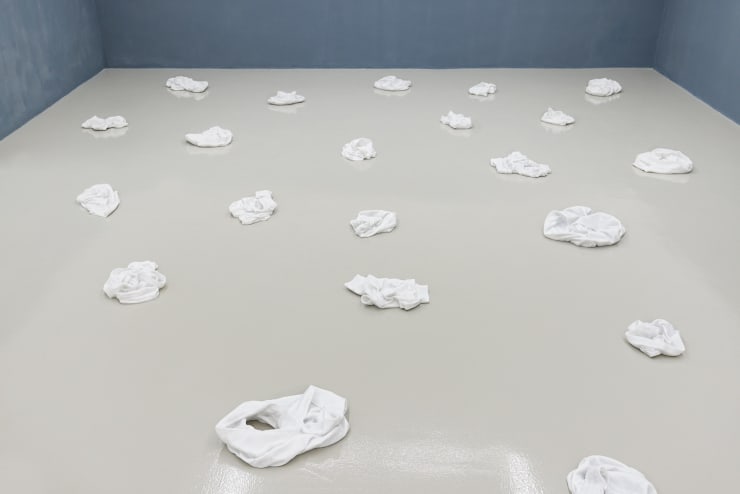Deviants
Past exhibition
Overview
The Duo exhibition Deviants at Galerie Kandlhofer presents photographs by Chilean artist Rodrigo Valenzuela, and sculptures by Iranian artist Reza Aramesh.
The new series of works "Garabatos" by Rodrigo Valenzuela (b. 1982, Chile) shows black and white photographs inspired by Rodrigo Valenzuela's research on Latin American subcultures and the music scene during the dictatorship years in the wake of Operation Condor. Operation Condor was a CIA-led initiative that aimed to neutralize socialist aspirations in South America by creating a network of cooperation between military regimes. Through the use of archival images, magazines, and film, the artist isolates the movements of bodies from documentary images, creating a vocabulary of gestures that subsequently become sculptures that are photographed. Reminiscent of a hybrid between a museum and a theater stage, the photographs represent an attempt to replace the ideology associated with the museum as a place of canonized beauty and information with a more egalitarian and sensitive place of common knowledge or wisdom about life.
The sculptures exhibited sculptures by Reza Aramesh (b. 1970, Iran) are part of the series of works "Study of Sweatcloth as an Object of Desire," which consists of life-size men's underwear carved from Carrara marble. The intended place of display of the objects represents the floor. The marble is shaped by deep cutting and polishing by master craftsmen to create the illusion of garments in keeping with historic European sculptural traditions. Each individual work, with its title engraved on the underside, refers to a series of historical dates and geographical locations of detention centers that the artist seeks to illuminate.
Due to the strong connotation of the respective work series to historical events as well as the illumination of social structures and ideologies, Valenzuela's and Aramesh's work series correspond with each other in an impressive way despite the use of different media. In particular, the thematization and treatment of human injustice and violence play a significant role in the oeuvre of both artists. By dealing with this subject matter in an artistically individual manner of expression, both artists succeed in a remarkable way in stimulating a penetrating contemplation on human behavior and social structures, which leaves lasting impressions on the viewer.
Works
-
 Rodrigo ValenzuelaGarabato #8, 2023Archival inkjet prints30 x 36 cm
Rodrigo ValenzuelaGarabato #8, 2023Archival inkjet prints30 x 36 cm
11 3/4 x 14 1/8 inEd 1 of 3 plus 1 AP(Edition record) -
 Rodrigo ValenzuelaGarabato #4, 2023Archival inkjet prints30 x 36 cm
Rodrigo ValenzuelaGarabato #4, 2023Archival inkjet prints30 x 36 cm
11 3/4 x 14 1/8 inEd 1 of 3 plus 1 AP(Edition record) -
 Reza ArameshACTION 292, Guayas 1 Prison 23 July 2023 PROGRESSION #45, 2023Carved and hand polished Bianco Michelangelo marble38 x 37 x 7 cm
Reza ArameshACTION 292, Guayas 1 Prison 23 July 2023 PROGRESSION #45, 2023Carved and hand polished Bianco Michelangelo marble38 x 37 x 7 cm
15 x 14 5/8 x 2 3/4 in -
 Reza ArameshACTION 268, Yucaipa Jail 6 November 2014 PROGRESSION #21, 2023Carved and hand polished Bianco Michelangelo marble27 x 26 x 8 cm
Reza ArameshACTION 268, Yucaipa Jail 6 November 2014 PROGRESSION #21, 2023Carved and hand polished Bianco Michelangelo marble27 x 26 x 8 cm
10 5/8 x 10 1/4 x 3 1/8 in -
 Rodrigo ValenzuelaGarabato #2, 2023Archival inkjet prints30 x 36 cm
Rodrigo ValenzuelaGarabato #2, 2023Archival inkjet prints30 x 36 cm
11 3/4 x 14 1/8 inEd 1 of 3 plus 1 AP(Edition record) -
 Rodrigo ValenzuelaGarabato #10, 2023Archival inkjet prints30 x 36 cm
Rodrigo ValenzuelaGarabato #10, 2023Archival inkjet prints30 x 36 cm
11 3/4 x 14 1/8 inEd 1 of 3 plus 1 AP(Edition record) -
 Rodrigo ValenzuelaGarabato #5, 2023Archival inkjet prints30 x 36 cm
Rodrigo ValenzuelaGarabato #5, 2023Archival inkjet prints30 x 36 cm
11 3/4 x 14 1/8 inEd 1 of 3 plus 1 AP(Edition record) -
 Reza ArameshACTION 263, CALIFORNIA STATE PRISON 7 MARCH 2019 PROGRESSION #16, 2023Carved and hand polished Bianco Michelangelo marble28 x 24 x 8 cm
Reza ArameshACTION 263, CALIFORNIA STATE PRISON 7 MARCH 2019 PROGRESSION #16, 2023Carved and hand polished Bianco Michelangelo marble28 x 24 x 8 cm
11 x 9 1/2 x 3 1/8 in -
 Reza ArameshACTION 287, Villa Marista PRISON 8 March 2012 PROGRESSION #40, 2023Carved and hand polished Bianco Michelangelo marble32 x 35 x 11 cm
Reza ArameshACTION 287, Villa Marista PRISON 8 March 2012 PROGRESSION #40, 2023Carved and hand polished Bianco Michelangelo marble32 x 35 x 11 cm
12 5/8 x 13 3/4 x 4 3/8 in -
 Rodrigo ValenzuelaGarabato #7, 2023Archival inkjet prints30 x 36 cm
Rodrigo ValenzuelaGarabato #7, 2023Archival inkjet prints30 x 36 cm
11 3/4 x 14 1/8 inEd 1 of 3 plus 1 AP(Edition record) -
 Rodrigo ValenzuelaGarabato #1, 2023Archival inkjet prints30 x 36 cm
Rodrigo ValenzuelaGarabato #1, 2023Archival inkjet prints30 x 36 cm
11 3/4 x 14 1/8 inEd 1 of 3 plus 1 AP(Edition record) -
 Rodrigo ValenzuelaGarabato #6, 2023Archival inkjet prints30 x 36 cm
Rodrigo ValenzuelaGarabato #6, 2023Archival inkjet prints30 x 36 cm
11 3/4 x 14 1/8 inEd 1 of 3 plus 1 AP(Edition record) -
 Reza ArameshACTION 270, Texas Department of Criminal Justice 2 February 1995 PROGRESSION #23, 2023Carved and hand polished Bianco Michelangelo marble34 x 29 x 5 cm
Reza ArameshACTION 270, Texas Department of Criminal Justice 2 February 1995 PROGRESSION #23, 2023Carved and hand polished Bianco Michelangelo marble34 x 29 x 5 cm
13 3/8 x 11 3/8 x 2 in
Press release
he Duo exhibition Deviants at Galerie Kandlhofer presents photographs by Chilean artist Rodrigo Valenzuela, and sculptures by Iranian artist Reza Aramesh.
The new series of works "Garabatos" by Rodrigo Valenzuela (b. 1982, Chile) shows black and white photographs inspired by Rodrigo Valenzuela's research on Latin American subcultures and the music scene during the dictatorship years in the wake of Operation Condor. Operation Condor was a CIA-led initiative that aimed to neutralize socialist aspirations in South America by creating a network of cooperation between military regimes. Through the use of archival images, magazines, and film, the artist isolates the movements of bodies from documentary images, creating a vocabulary of gestures that subsequently become sculptures that are photographed. Reminiscent of a hybrid between a museum and a theater stage, the photographs represent an attempt to replace the ideology associated with the museum as a place of canonized beauty and information with a more egalitarian and sensitive place of common knowledge or wisdom about life.
The title of the works, Garabatos can be translated as "scribble". Colloquially, however, a "garabato" is also an insult shouted in the streets or stadiums of Chile. Valenzuela is interested in abstract gestures that are part of a collective vocabulary, a desperate attempt to communicate, a movement of desire, or a class code. Insults belong to subcultures and are an important part of national identity; an insult is a mixture of pop culture, class and geography. Valenzuela has an interest in analyzing, through his work, the social responses to injustice and anger, especially considering that most Latin American countries at one time experienced very similar rules and assaults emanating from the ideology of American imperialism.
The sculptures exhibited sculptures by Reza Aramesh (b. 1970, Iran) are part of the series of works "Study of Sweatcloth as an Object of Desire," which consists of life-size men's underwear carved from Carrara marble. The intended place of display of the objects represents the floor. The marble is shaped by deep cutting and polishing by master craftsmen to create the illusion of garments in keeping with historic European sculptural traditions. Each individual work, with its title engraved on the underside, refers to a series of historical dates and geographical locations of detention centers that the artist seeks to illuminate.
Reza Aramesh's ongoing investigation into various representations of violence and its promises draws on autobiographically formative teenage years in which the artist left the country of his birth, Iran. Although Aramesh is unsentimental in his conceptual practice and rarely refers to his personal experiences in his art, there is an overarching theme that speaks to his unwavering commitment to human injustice. He is interested in the tipping point where empathy and cruelty can flip in an instant. The ethos of the series is to provide an experience of materiality and to engage with the representation of soft materials being transformed into sculpted stone. Furthermore, the ongoing series offer a specific language for the event of being proverbially stripped of one's dignity in situations of subjugation and coercion. In particular, the event of being arrested and taken to a prison. Each object represents the abandonment of the last personal garment, a pair of underpants, before being processed into a human statistic by a human being.
Due to the strong connotation of the respective work series to historical events as well as the illumination of social structures and ideologies, Valenzuela's and Aramesh's work series correspond with each other in an impressive way despite the use of different media. In particular, the thematization and treatment of human injustice and violence play a significant role in the oeuvre of both artists. By dealing with this subject matter in an artistically individual manner of expression, both artists succeed in a remarkable way in stimulating a penetrating contemplation on human behavior and social structures, which leaves lasting impressions on the viewer.
Installation Views
-
 Installation View, Deviants - Rodrigo Valenzuela & Reza Aramesh, 2023
Installation View, Deviants - Rodrigo Valenzuela & Reza Aramesh, 2023 -
 Rodrigo ValenzuelaInstallation View: Deviants, 2023
Rodrigo ValenzuelaInstallation View: Deviants, 2023 -
 Installation View, Deviants - Rodrigo Valenzuela & Reza Aramesh, 2023
Installation View, Deviants - Rodrigo Valenzuela & Reza Aramesh, 2023 -
 Installation View, Deviants - Rodrigo Valenzuela & Reza Aramesh, 2023
Installation View, Deviants - Rodrigo Valenzuela & Reza Aramesh, 2023 -
 Rodrigo ValenzuelaInstallation View: Deviants, 2023
Rodrigo ValenzuelaInstallation View: Deviants, 2023 -
 Reza ArameshInstallation View: Deviants, 2023
Reza ArameshInstallation View: Deviants, 2023 -
 Installation View: Reza Aramesh & Rodrigo Valenzuela - Deviants, 2023
Installation View: Reza Aramesh & Rodrigo Valenzuela - Deviants, 2023 -
 Installation View: Reza Aramesh & Rodrigo Valenzuela - Deviants, 2023
Installation View: Reza Aramesh & Rodrigo Valenzuela - Deviants, 2023 -
 Rodrigo ValenzuelaInstallation View: Deviants , 2023
Rodrigo ValenzuelaInstallation View: Deviants , 2023 -
 Reza ArameshInstallation View: Deviants, 2023
Reza ArameshInstallation View: Deviants, 2023 -
 Installation View: Reza Aramesh & Rodrigo Valenzuela - Deviants, 2023
Installation View: Reza Aramesh & Rodrigo Valenzuela - Deviants, 2023



